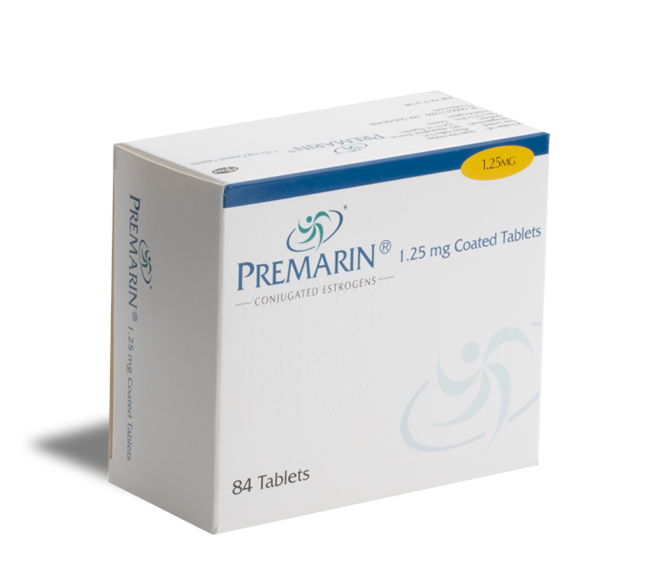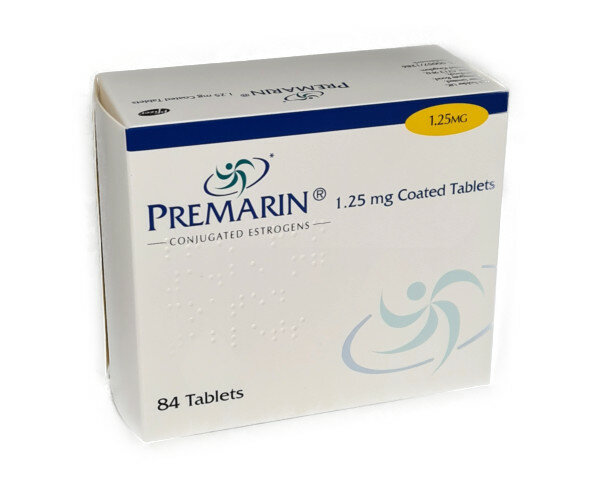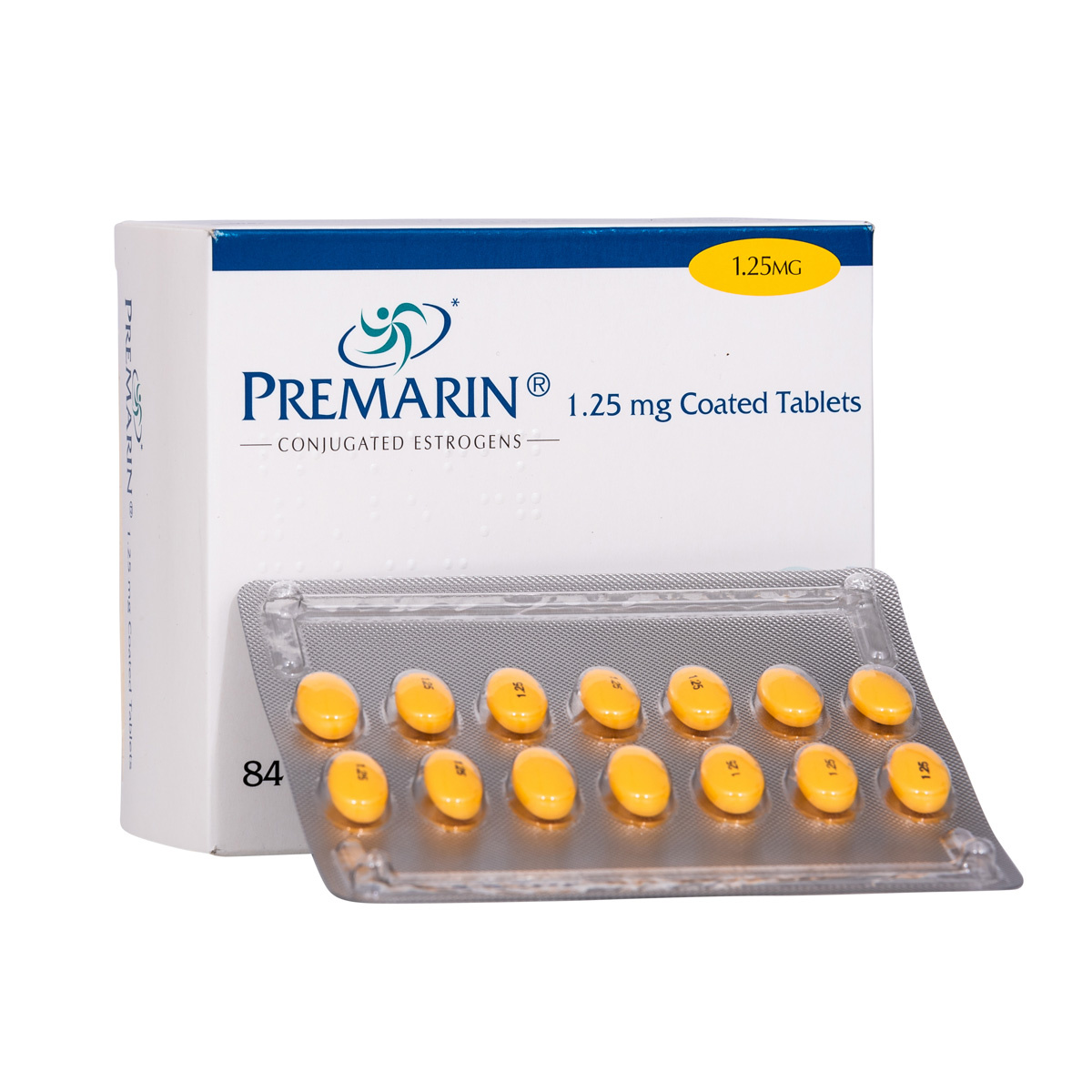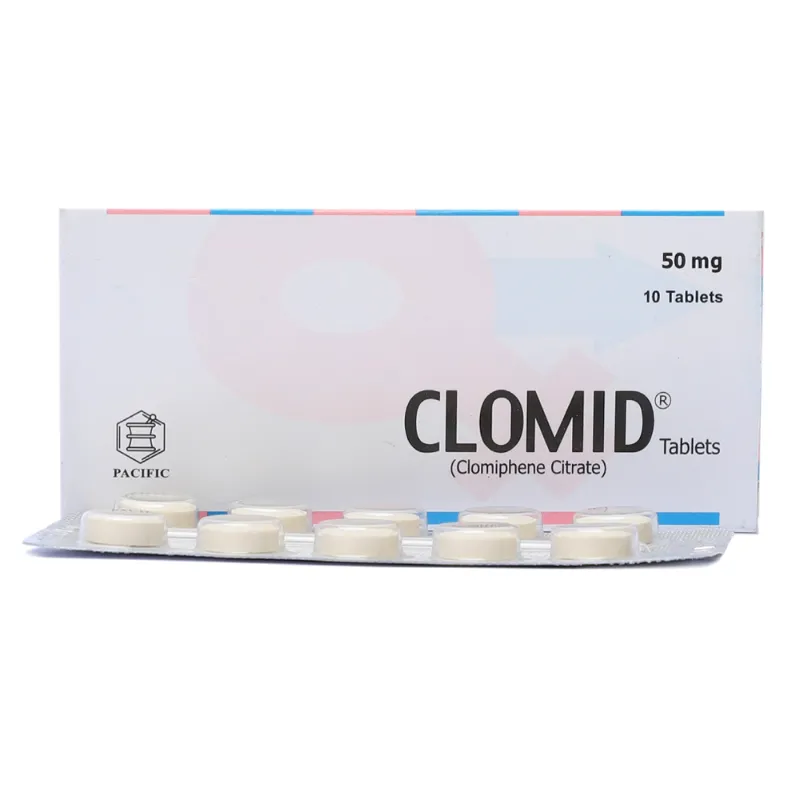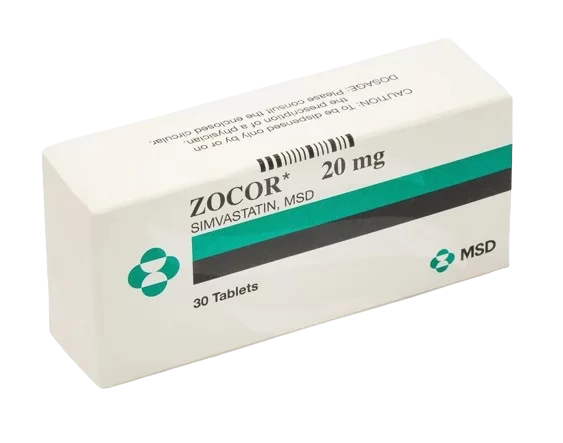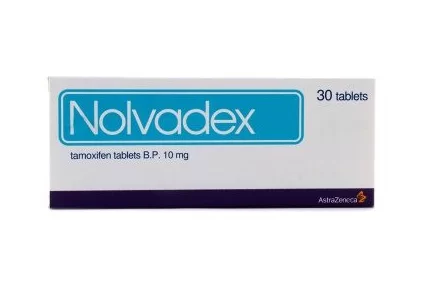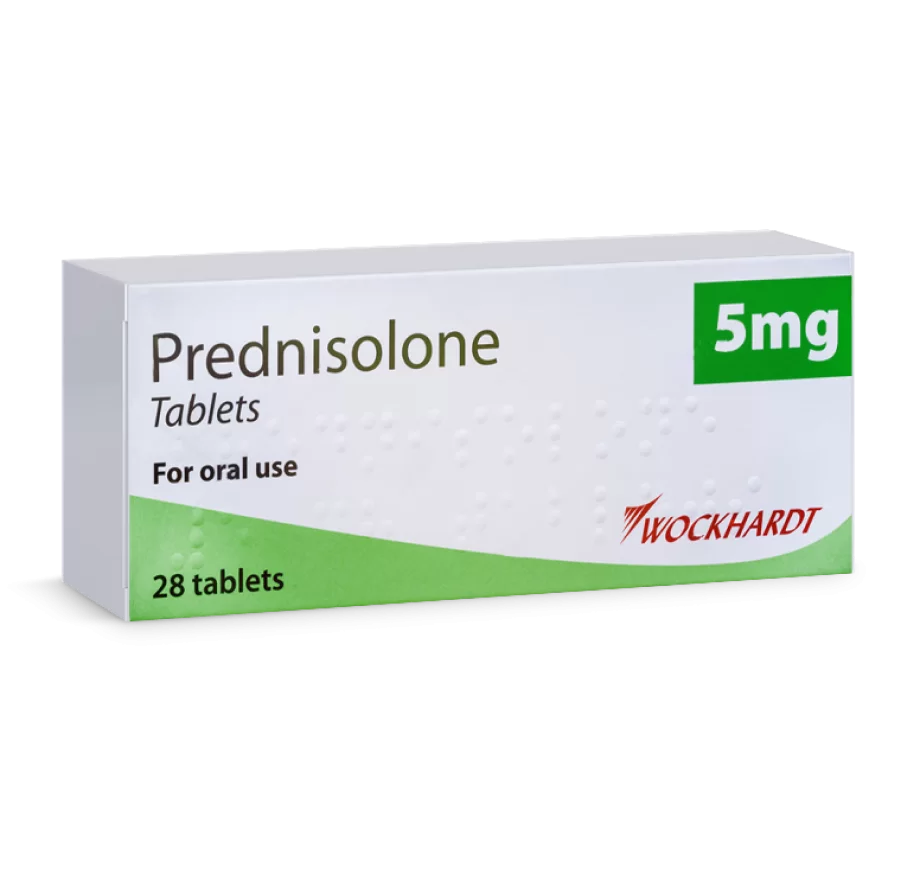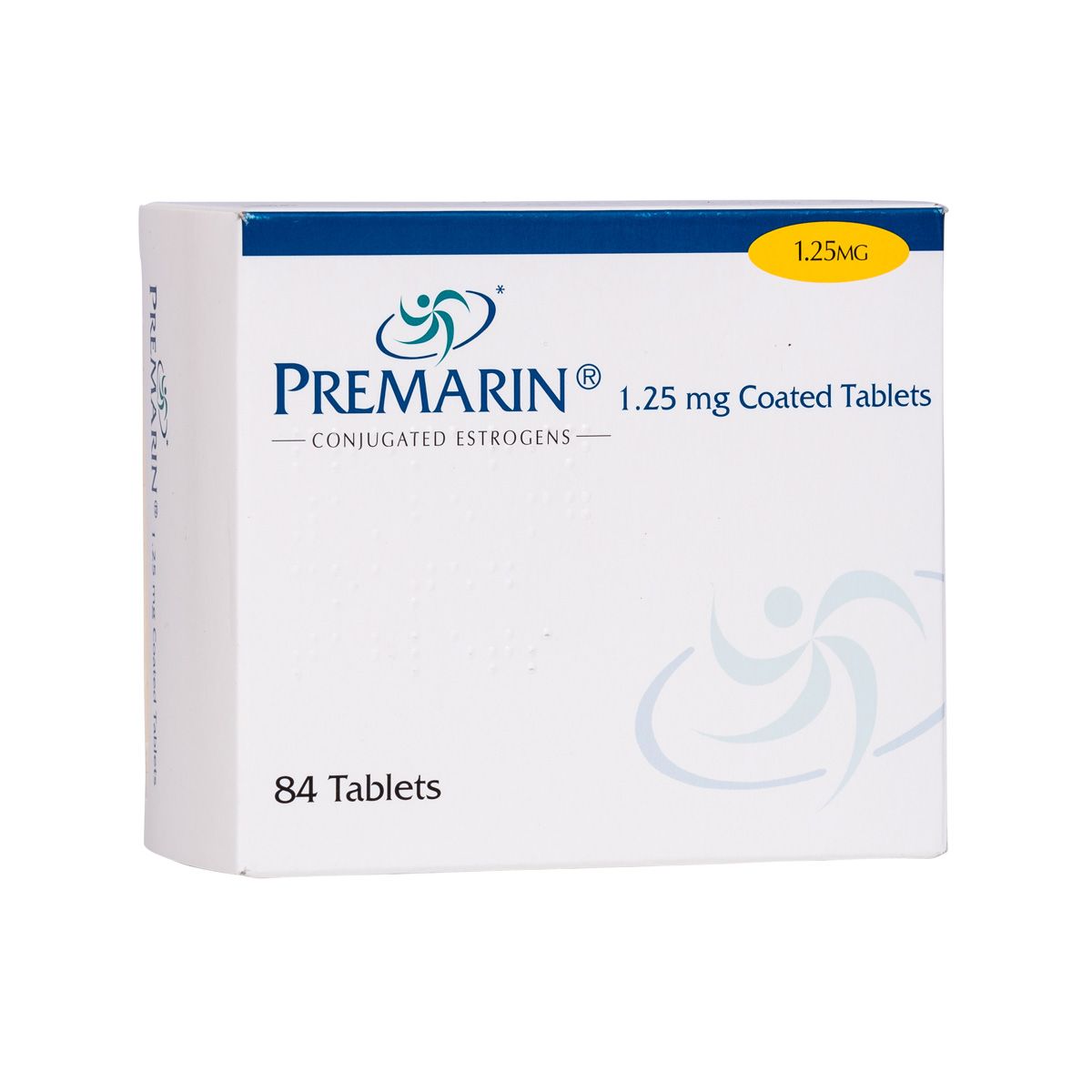
Premarin
Premarin - 625mg
Overview of Premarin
General Introduction to Premarin
Premarin, known generically as conjugated estrogens, is a hormone replacement therapy (HRT) primarily used to manage menopausal symptoms. These symptoms include hot flashes, vaginal dryness, and osteoporosis prevention in postmenopausal women. Available in various forms—tablets, creams, and injections—Premarin offers versatility for different therapeutic needs.
Key Benefits and Unique Properties of Premarin
Premarin is highly effective in alleviating menopausal symptoms due to its composition of conjugated estrogens. These estrogens help restore hormonal balance, reducing hot flashes, night sweats, and vaginal dryness. Derived from the urine of pregnant mares, Premarin provides a broad range of estrogenic compounds that closely mimic the body's natural estrogens, offering significant therapeutic benefits compared to synthetic alternatives.
Effectiveness of Premarin
Clinical studies have demonstrated Premarin's effectiveness in managing menopausal symptoms. Patients typically experience relief from hot flashes and night sweats within a few weeks of starting therapy. Long-term use of Premarin has been shown to prevent bone loss and reduce the risk of osteoporosis in postmenopausal women. The medication's effects are generally sustained with continuous use, providing consistent symptom relief.
Safety and Tolerability of Premarin
Premarin is generally well-tolerated when used as prescribed. Common side effects include headaches, breast tenderness, and nausea. More serious side effects can include an increased risk of blood clots, stroke, and certain types of cancer. Regular monitoring by a healthcare provider is essential to manage these risks. Premarin is contraindicated in individuals with a history of hormone-sensitive cancers, active liver disease, or unexplained vaginal bleeding.
Indications for Use
Conditions Treated by Premarin
Premarin is indicated for the treatment of moderate to severe vasomotor symptoms associated with menopause, such as hot flashes and night sweats. It is also prescribed for the management of vulvar and vaginal atrophy, which can cause dryness, itching, and discomfort. Additionally, Premarin is used to prevent osteoporosis in postmenopausal women who are at high risk of fractures and cannot tolerate other osteoporosis medications.
Symptom Relief Provided by Premarin
Premarin effectively alleviates hot flashes, reducing their frequency and intensity. It also helps maintain vaginal health by improving lubrication and reducing atrophy-related symptoms. For osteoporosis prevention, Premarin helps maintain bone density and reduce the risk of fractures, especially in the hip and spine.
Dosage and Administration
Dosage Guidelines for Premarin
The dosage of Premarin varies based on the condition being treated and the patient's response to therapy. For menopausal symptom relief, the typical starting dose is 0.3 mg to 1.25 mg daily, adjusted as needed. For vaginal atrophy, a lower dose or topical application may be recommended. For osteoporosis prevention, the usual dose is 0.625 mg daily.
Administration Recommendations
Premarin tablets should be taken orally, preferably at the same time each day to maintain consistent blood levels. When used for vaginal atrophy, Premarin cream is applied intravaginally, usually at bedtime. It's essential to follow the prescribed regimen closely and not miss doses. If a dose is missed, it should be taken as soon as remembered unless it is almost time for the next dose, in which case the missed dose should be skipped.
Pharmacological Action
Mechanism of Action of Premarin
Premarin works by supplementing the body with estrogen hormones, which are deficient during menopause. Estrogens play a crucial role in regulating various physiological processes, including the maintenance of the reproductive system, bone density, and cardiovascular health. By replenishing estrogen levels, Premarin helps alleviate menopausal symptoms and prevents bone loss.
Molecular and Cellular Targets
Premarin's estrogens bind to estrogen receptors in various tissues, including the hypothalamus, which regulates body temperature and helps reduce hot flashes. In the vaginal epithelium, estrogens promote cell proliferation and mucus production, reducing dryness and atrophy. In bones, estrogens inhibit osteoclast activity, which is responsible for bone resorption, thus maintaining bone density.
Composition
Active Ingredients in Premarin
Premarin contains conjugated estrogens derived from the urine of pregnant mares. These estrogens include estrone, equilin, and other estrogenic compounds that mimic the natural estrogens found in the human body. The exact composition of estrogens may vary, but they collectively provide the therapeutic effects needed to manage menopausal symptoms.
Inactive Ingredients
In addition to active estrogens, Premarin tablets contain various inactive ingredients that aid in the formulation and stability of the medication. These may include lactose, magnesium stearate, microcrystalline cellulose, and other excipients that ensure the tablet's integrity and facilitate its absorption in the body.
Side Effects
Common Side Effects of Premarin
Common side effects experienced by users of Premarin include headaches, breast tenderness, nausea, and bloating. These side effects are usually mild and tend to diminish as the body adjusts to the medication.
Serious Side Effects
Serious side effects can include an increased risk of cardiovascular events such as heart attacks and strokes, especially in older women or those with pre-existing risk factors. There is also an elevated risk of hormone-sensitive cancers, including breast and endometrial cancer. Any unusual symptoms such as severe headaches, vision changes, chest pain, or leg swelling should be reported to a healthcare provider immediately.
Prevention of Side Effects
To minimize side effects, it is crucial to use the lowest effective dose of Premarin for the shortest duration necessary. Regular follow-ups with a healthcare provider can help monitor for adverse effects and adjust the dosage as needed. Maintaining a healthy lifestyle, including a balanced diet and regular exercise, can also help mitigate some of the cardiovascular risks associated with hormone therapy.
Recommendations for Safe Use
Patients should inform their healthcare provider of any pre-existing conditions, especially a history of blood clots, strokes, or cancers. It's also essential to report all medications being taken, as certain drugs can interact with Premarin and increase the risk of side effects. Avoiding smoking and limiting alcohol consumption can further reduce the risk of adverse effects.
Contraindications
Conditions That Preclude Use of Premarin
Premarin is contraindicated in women with a known or suspected history of hormone-sensitive cancers, such as breast or endometrial cancer. It should not be used in individuals with active or history of blood clots, stroke, or liver disease. Additionally, it is contraindicated in patients with unexplained vaginal bleeding, as this could indicate an underlying condition that needs to be investigated.
Reasons for Contraindications
The presence of estrogen-sensitive tumors can be exacerbated by additional estrogen, increasing the risk of cancer progression. Blood clots and strokes can be aggravated by estrogen therapy, making it unsafe for individuals with these conditions. Liver disease can affect the metabolism of estrogens, leading to potential toxicity or reduced effectiveness of the medication.
Warnings/Precautions
Important Warnings for Premarin Use
Women using Premarin should be aware of the increased risks of cardiovascular events and cancers. It is crucial to have regular screenings, such as mammograms and pelvic exams, to detect any early signs of adverse effects. Premarin should be used with caution in women with risk factors for cardiovascular disease or a history of hormone-sensitive conditions.
Precautionary Measures
Before starting Premarin, a thorough medical history and assessment should be conducted by a healthcare provider. During treatment, patients should have regular follow-ups to monitor their health and any emerging side effects. Adjusting lifestyle factors, such as diet, exercise, and smoking cessation, can also help mitigate some of the risks associated with hormone therapy.
Missed Dose
What to Do If a Dose Is Missed
If a dose of Premarin is missed, it should be taken as soon as remembered, unless it is almost time for the next scheduled dose. In such cases, the missed dose should be skipped, and the regular dosing schedule should be resumed. Doubling up on doses to make up for a missed one should be avoided to prevent potential side effects.
Tips to Avoid Missing Doses
Setting reminders, using pill organizers, and integrating the medication into a daily routine can help ensure doses are not missed. Consistency in taking Premarin at the same time each day can also aid in maintaining stable blood levels of the medication.
Drug Interactions
Potential Drug Interactions with Premarin
Premarin can interact with several medications, including anticoagulants (blood thinners), thyroid hormones, and certain antibiotics. These interactions can alter the effectiveness of Premarin or the other medications, leading to either reduced therapeutic effects or increased risk of side effects.
Managing Drug Interactions
It is essential to inform the healthcare provider of all medications, supplements, and herbal products being taken. Adjustments to the dosing schedule or medication changes may be necessary to manage interactions effectively. Regular monitoring and blood tests can help ensure that drug levels remain within a safe and therapeutic range.
Overdose
Symptoms of Premarin Overdose
Symptoms of an overdose of Premarin may include nausea, vomiting, breast tenderness, dizziness, and abnormal vaginal bleeding. Severe overdose symptoms can include significant fluid retention, shortness of breath, and severe headaches. In extreme cases, an overdose can lead to more serious conditions such as thromboembolic events or cardiovascular complications.
Actions to Take in Case of Overdose
If an overdose of Premarin is suspected, it is crucial to seek immediate medical attention. Contact a healthcare provider or go to the nearest emergency room. It is helpful to bring the medication packaging or a list of medications being taken. Treatment for an overdose may include symptomatic management, such as antiemetics for nausea or medications to manage cardiovascular symptoms. Monitoring and supportive care in a medical facility will be necessary to ensure patient safety.
Pharmacokinetics
Absorption of Premarin
Premarin is well-absorbed after oral administration. The bioavailability of conjugated estrogens is variable but generally sufficient to exert the desired pharmacological effects. Factors such as the presence of food can influence the absorption rate and extent, with some studies suggesting that food may delay but not significantly reduce overall absorption.
Distribution in the Body
Once absorbed, Premarin is distributed throughout the body, binding extensively to plasma proteins, primarily albumin. The distribution of estrogens to various tissues, including the liver, kidneys, and reproductive organs, allows for their physiological effects. Estrogens also cross the blood-brain barrier, contributing to their impact on the central nervous system.
Metabolism of Premarin
Premarin undergoes extensive first-pass metabolism in the liver, where conjugated estrogens are metabolized into sulfate and glucuronide conjugates. These metabolites are then excreted in the urine. The liver's metabolic pathways include oxidation, reduction, and conjugation processes, which help in the biotransformation of estrogens.
Excretion of Premarin
The primary route of excretion for Premarin is through the urine, with metabolites being eliminated via renal pathways. A small portion of conjugated estrogens is excreted in feces. The half-life of conjugated estrogens can vary, but it generally ranges from 10 to 20 hours, depending on the individual's metabolism and renal function.
Dosage Forms
Available Forms and Dosages of Premarin
Premarin is available in various forms to suit different therapeutic needs. The most common form is oral tablets, available in dosages of 0.3 mg, 0.45 mg, 0.625 mg, 0.9 mg, and 1.25 mg. These tablets are taken daily or cyclically, depending on the treatment plan. Premarin also comes in a vaginal cream, which is used to treat local symptoms of vaginal atrophy. The cream is typically applied intravaginally in measured doses. Additionally, Premarin can be administered via injections, usually in a clinical setting for specific indications.
Benefits of Different Dosage Forms
The availability of multiple dosage forms allows for tailored treatment plans. Oral tablets provide systemic relief of menopausal symptoms and prevention of osteoporosis. Vaginal cream offers localized treatment for vaginal atrophy with minimal systemic absorption, reducing the risk of systemic side effects. Injectable forms are reserved for situations requiring rapid or intensive hormone therapy.
Pregnancy and Breastfeeding
Safety During Pregnancy
Premarin is classified as a Category X medication for pregnancy, indicating that it should not be used during pregnancy due to potential risks to the fetus. Estrogen therapy during pregnancy can lead to congenital abnormalities, including genital malformations and developmental issues. Women who are pregnant or planning to become pregnant should not use Premarin.
Use During Breastfeeding
The use of Premarin during breastfeeding is generally not recommended. Estrogens can pass into breast milk and may affect milk production and quality. Additionally, the potential effects on a nursing infant are not well-studied, so the risks cannot be fully assessed. If hormone therapy is necessary during breastfeeding, non-estrogen alternatives should be considered, and breastfeeding mothers should consult their healthcare provider for personalized advice.
Storage Conditions
General Storage Guidelines for Premarin
Premarin should be stored at room temperature, away from light and moisture. The recommended storage temperature is typically between 20°C and 25°C (68°F to 77°F). It is essential to keep the medication in its original container and out of reach of children and pets.
Handling and Disposal
Premarin tablets and cream should be handled with clean, dry hands. Any unused or expired medication should be disposed of properly, following local regulations for pharmaceutical disposal. Do not flush medications down the toilet or pour them into drains unless instructed to do so.
Clinical Trials and Efficacy
Overview of Clinical Studies
Clinical trials have consistently demonstrated the efficacy of Premarin in managing menopausal symptoms and preventing osteoporosis. These studies have employed rigorous methodologies, including double-blind, placebo-controlled designs, to ensure reliable results. Trials have shown significant improvements in vasomotor symptoms, vaginal health, and bone density among Premarin users compared to placebo groups.
Key Findings and Comparisons
Premarin has been found to significantly reduce the frequency and severity of hot flashes and night sweats. It also improves vaginal health by reducing dryness and atrophy. In osteoporosis prevention, Premarin has been shown to maintain or increase bone density, thereby reducing the risk of fractures. When compared to other hormone replacement therapies, Premarin's unique formulation provides a broader range of estrogenic compounds, offering potentially more comprehensive symptom relief.
Conclusion
Summary of Key Aspects of Premarin
Premarin is a versatile and effective hormone replacement therapy used to manage menopausal symptoms and prevent osteoporosis. Its unique formulation of conjugated estrogens closely mimics natural hormones, providing relief from hot flashes, night sweats, and vaginal dryness. Premarin is available in various forms, including tablets, cream, and injections, allowing for tailored treatment plans.
Primary Benefits of Premarin
The primary benefits of Premarin include its effectiveness in alleviating menopausal symptoms, maintaining bone density, and offering a comprehensive range of estrogenic compounds. Its availability in multiple dosage forms enhances its versatility and convenience for patients.
Usage Recommendations
Premarin should be used under the guidance of a healthcare provider, with regular monitoring to ensure safety and efficacy. It is essential to use the lowest effective dose for the shortest duration necessary. Patients should be aware of the potential risks, including cardiovascular events and hormone-sensitive cancers, and take appropriate precautions. Regular follow-ups and lifestyle adjustments can help optimize the benefits of Premarin therapy.
